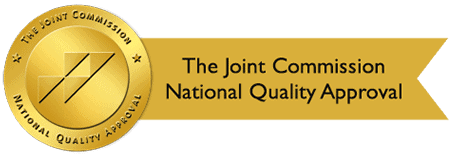By: Design for Change Recovery
Categories:
Teens and Fentanyl: What Parents Need to Know
You are here:Although these figures are shocking, it’s also alarming to know that the statistics regarding teens and fentanyl misuse or inappropriate use are predicted to rise.
Key Points
- According to the CDC, drug overdose deaths among teens have nearly tripled in recent years.
- Fentanyl was involved in more than 84% of teen overdose deaths, while opioids of any type were present in 91%.
- About 25% of adolescent overdose deaths involved some type of counterfeit pill.
- Out of the 2,200 teen overdoses in a 2 ½ year span, 96% were adolescents between the ages of 15 and 19.
The use of fentanyl is becoming increasingly prevalent among teens in the United States. They are the fastest-growing group to suffer fatal overdoses caused by this dangerous synthetic opioid.
Why Is Teen Drug Use Becoming More Dangerous?
 It’s not unusual for teens to engage in risk-taking behaviors. They want to fit in with the crowd and have fun. But, far too often, drugs and alcohol are involved, and a teen can be poisoned with fentanyl without realizing it.
It’s not unusual for teens to engage in risk-taking behaviors. They want to fit in with the crowd and have fun. But, far too often, drugs and alcohol are involved, and a teen can be poisoned with fentanyl without realizing it.
How does a teen ingest fentanyl without knowing it? It can happen in several ways. For instance:
- Counterfeit pills that resemble Adderall, Xanax, or Oxycodone are laced with dangerous amounts of fentanyl. Some of the pills are intentionally rainbow-colored to appeal to young teens.
- Cocaine, methamphetamine, heroin, and MDMA can contain fentanyl.
- Fentanyl is extremely potent so it takes only a small amount to produce a high. For this reason, it is a cheaper option for teens who don’t have much money to spend.
- Illicit fentanyl is sold in easy-to-use eye drops, nasal sprays, dropped on blotter paper or made to look like legal opioid pills.
Teenagers can unknowingly ingest fentanyl thinking it is a familiar drug. When this happens, they can suffer long-term damage to their health. Of course, a fatal overdose is the most concerning aspect of teen drug use involving fentanyl.
What Are the Signs of Teens and Fentanyl Overdose?
Prescription fentanyl is 50 times stronger than heroin and 100 times stronger than morphine. It is used medically as a beneficial part of physician-supervised pain management for people with chronic illnesses. Illicit fentanyl is produced in clandestine labs that use dangerous chemicals to make the drug more potent and cheaper to manufacture.
Anyone who uses street drugs today should be aware of the chance of getting a fentanyl-laced drug. Many different drugs can contain deadly levels of fentanyl and it cannot be detected by taste or smell. It’s also important to know the signs of a fentanyl overdose. A person’s life could depend on this knowledge.
The warning signs of a fentanyl overdose can include:
- Pinpoint pupils
- Unconsciousness
- Confusion, lethargy
- Slow or shallow breathing
- Choking or gurgling sounds
- Clammy skin
- Limp body
- Blue-tinged lips, nails, or skin
It may be hard to tell if a person is high or if they are experiencing an overdose. If someone exhibits the above warning signs, it’s best not to assume they are just too high. Call 911 and administer naloxone if it’s available. Try to keep the person awake, lay them on their side to prevent choking, and stay with the person until help arrives.
Many people rely on fentanyl test strips which are inexpensive and will provide results within five minutes. However, the strips won’t detect more deadly fentanyl analogs such as carfentanil.
Teens and Fentanyl Addiction: Life-Changing Effects
Because of its potency, fentanyl is highly addictive, even in its legal prescription form. It is especially easy for teens to become addicted to fentanyl for many reasons. If they do become addicted to a drug, the consequences can be more severe than for adults.
Teens and young adults are at high risk for addiction because their brains are still forming. The prefrontal cortex, which regulates emotions and decision-making, is not fully developed. Because of this, addictive substances can permanently impair an adolescent’s brain volume and cognitive performance, resulting in memory loss and learning difficulties.
Physical and mental signs of teens and fentanyl misuse or inappropriate use include:
- Changes in weight, appetite, or sleep patterns
- Injection marks on the skin
- Poor performance at school or work
- Relationship problems
- Lack of interest in hobbies or activities
- Nausea, vomiting
- Shakiness, dizziness
- Social isolation
- Secretive behavior
- Lying or stealing
Teenagers tend to assume that if a pill looks like a prescription pill, it is safe. The problem is that illicit fentanyl pills are designed to look like prescription drugs. This intentional deception has resulted in thousands of teenagers dying needlessly.
Get Evidence-Based Fentanyl Addiction Treatment at Design for Change Recovery
Fentanyl is one of the most challenging addictions to conquer, but it can be done with the right treatment. At Design for Change Recovery, we offer a treatment approach that focuses on healing the physical, mental, and emotional aspects of substance use disorders. We help our clients identify the factors that contributed to their drug use and develop strategies to prevent relapse.
An effective addiction treatment plan should be flexible enough to adapt to each client’s unique needs. With Design for Change, clients can choose from a variety of options that can be incorporated into a personalized plan that they feel comfortable with. We aim to teach clients that a drug-free lifestyle is possible.
If you or someone you love is struggling with fentanyl addiction, reach out to us at our Lancaster, CA facility today. One of our representatives will help you choose the best treatment plan for your situation.
Sources:
- cdc.gov/l – Fentanyl Facts
- nida.nih.gov/– What Is Fentanyl?


